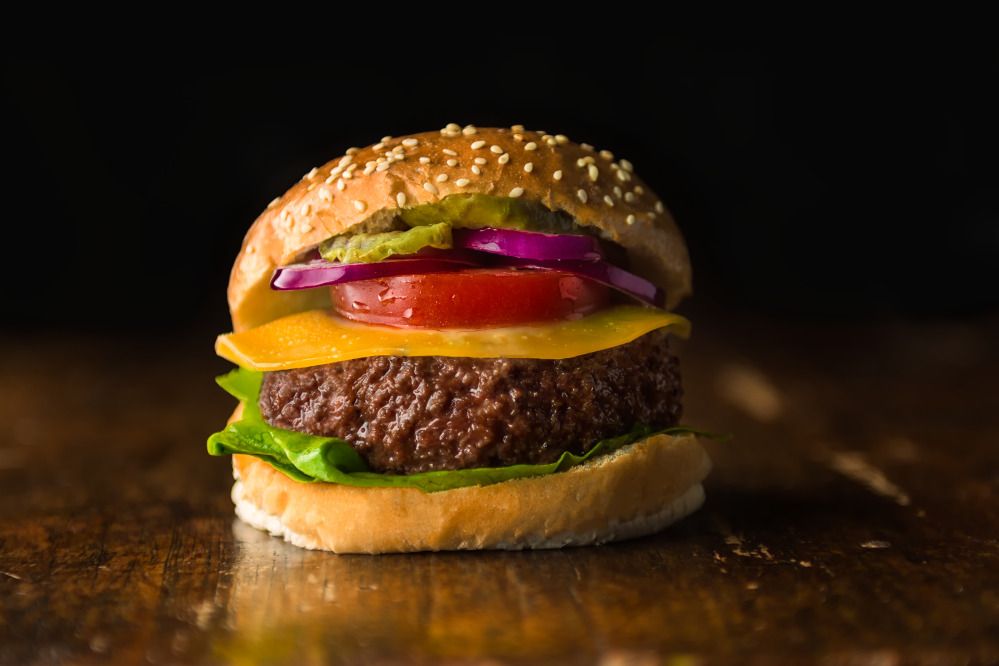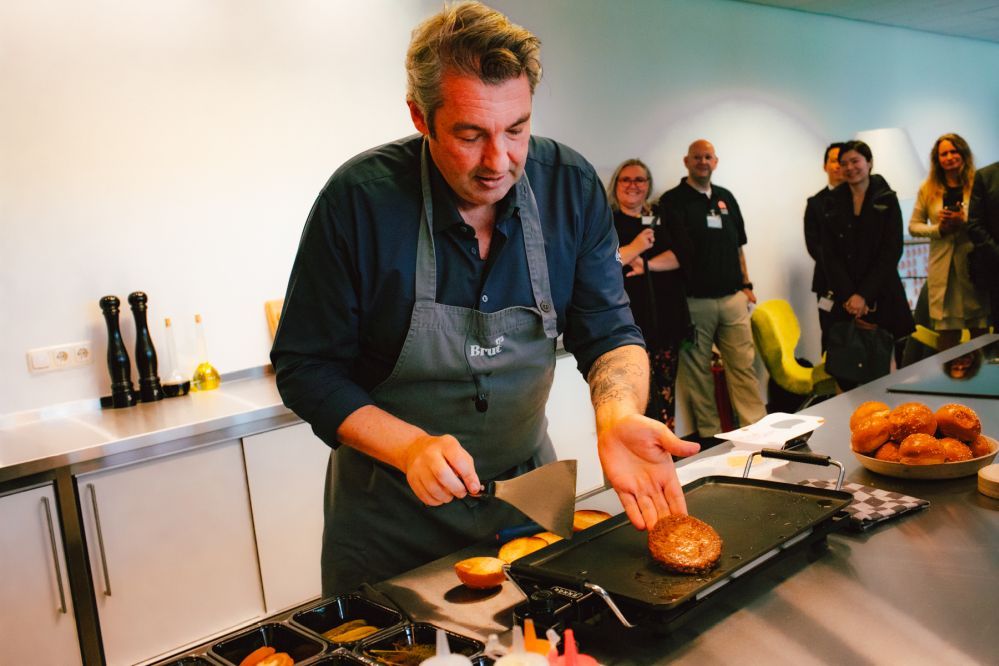A decade after cofounder Dr. Mark Post unveiled the world’s first beef burger made from animal cells grown outside of an animal, Dutch cultivated meat startup Mosa Meat has opened a 30,000sq ft ‘scale-up plant’ in Maastricht as it edges closer to commercialization.
Part of a 79,000sq ft facility at the new Mosa C.A.M.P.U.S. (Center for Advanced Meat Production, Upscaling, and Sustainability), the plant will initially have the capacity to make tens of thousands of cultivated burgers a year from 1,000-liter bioreactors.
“The facility is designed to grow up to hundreds of thousands of cultivated hamburgers per year as demand increases with regulatory approvals and regional market entries. And in combination with our contract manufacturer [Esco Aster] in Singapore, even a lot more,” said CEO Maarten Bosch.
‘There’s a ton of startups and there will be a chunk that will not survive’
Founded in 2016 by Dr. Mark Post (CSO) and Peter Verstrate (COO), Mosa Meat makes cultivated minced beef using bovine muscle and fat precursor cells (adult stem cells) and says it sees “a clear path towards price parity [with conventional beef].”
To date, the company has raised about $100 million from backers including Blue Horizon, Bell Food Group, Nutreco, Mitsubishi, and Leonardo DiCaprio. It is now talking to regulators in multiple countries as it approaches commercialization, with a dossier submission under the Novel Food Regulation coming soon, Bosch told AFN.
“It’s very likely that Singapore will be amongst the first [markets for launch for Mosa Meat]. In Europe, we are positioned to be the first [cultivated meat company to enter the market] as we have a non GMO approach, which is a big plus from a regulatory perspective.”
Asked about investor attitudes to cultivated meat given the sharp drop off in food tech investment over the past year, he added: “Some investors are a bit more cautious, so we’re seeing a correction. But that’s not necessarily bad. Investors that know what they’re talking about still see the potential of cultivated meat.
“There’s a ton of startups and there will be a chunk that will not survive, and others will be acquired or will merge. That’s normal in any new industry.”
He added: “Mosa Meat has been adding the capabilities required to produce at a global scale from day one, and I think we’ve made the right choices, if not always the fastest.”

‘We don’t use scaffolds’
At Mosa Meat, bovine muscle and fat precursor cells are first proliferated and then triggered to differentiate into recognizable muscle and fat tissue to provide the nutrition, flavor, and texture consumers expect from meat, without using fetal bovine serum (FBS), says the firm.
“We believe that using only undifferentiated cells won’t provide enough value to consumers in terms of the taste experience and aromas of mature fat tissue since the total lipid content and composition will be very different from that of conventional beef fat. To our knowledge we are the only cultivated meat company that achieved true adipogenesis during differentiation instead of ‘feeding’ cells lipids to improve their composition.”
“We have a two-stage process and we create real tissue, but we don’t use scaffolds,” said Bosch. “In the second step, instead of a scaffold that remains in the products, we have an alginate-based gel system that helps the cells self-organize. They basically find each other and form tissue that we harvest.”
He added: “We’re starting with minced beef. Later, we will introduce steak, which has additional complexities. But the knowledge we’re building around tissue formation in the differentiation phase, coupled with the supply chain we’re building with [partner] Nutreco, is going to be essential when we do introduce steak.”

‘We don’t need 250,000-liter bioreactors to make this profitable’
So what is the sweet spot for bioreactor size, a hotly debated area in cultivated meat, with some players such as Ark Biotech suggesting the industry needs colossal 1m-liter bioreactors, while others such as as Fork & Good argue that smaller vessels operating continuously make more economic sense?
Noting that fellow startup GOOD Meat is exploring 250,000-L bioreactors for its cultivated chicken, Bosch said: “We take a more conservative approach where we try to focus on numbers that have been proven in other industries and with those, we can easily make it into an attractive business model.
“I don’t know the unit economics at GOOD Meat, but the feed conversion rate of a chicken is much better than beef, and the market prices are lower, so maybe they need a different type of goal in order to become competitive. But we don’t need 250,000-liter bioreactors to make [cultivated beef] profitable.”
Beef or chicken?
As to the commercial viability of cultivated meat, he said: “I’ve always been confident. It’s about the technology choices you make, but also strategic choices. So for instance, for beef, I believe we’re in a very good position because cows are such poor converters of nutrients [into meat, compared to other animals]. So if you can beat the animal’s [feed] conversion rates you have a chance to beat them [on price], whereas it’s much more challenging with chicken.
“Then combine that with the fact that beef has higher market value [than chicken], and it just puts us in a better position to reach price parity, and that’s in the end what will largely determine success, as long as we get the taste right.”
While some players are initially looking to commercialize more exotic animal species that can attract higher prices before the technology operates at a larger scale, he said, “If you look at the consumers that might be receptive to quail and crocodile meat, it’s a very niche market.
“At Mosa Meat, we want to reduce the impact of the current food system and beef is just the biggest contributor to climate change [of all the meat varieties widely consumed]. So that’s where we need to focus our efforts.”

‘We need the whole ecosystem to flourish’
So does the cultivated meat industry need government funding to get off the ground given the reluctance of VC funds to finance large capex projects and the unwillingness of banks to finance technology that has not yet been proven at scale?
“I think the answer is yes,” said Bosch. “We’re exploring all the possibilities. We can’t solve this big challenge alone. We have strong partners such as Nutreco who are investing, but we need the whole ecosystem to flourish. And that means more money needs to be put into research, into education, into all the things that make a new industry happen.
“And that’s why we put a lot of effort into setting up the consortium in the Netherlands, which was ultimately awarded €60 million [by the Dutch government to support cellular agriculture].”

Further reading:
GOOD Meat gets green light from FDA for cultivated meat, edges closer to commercialization in the US




